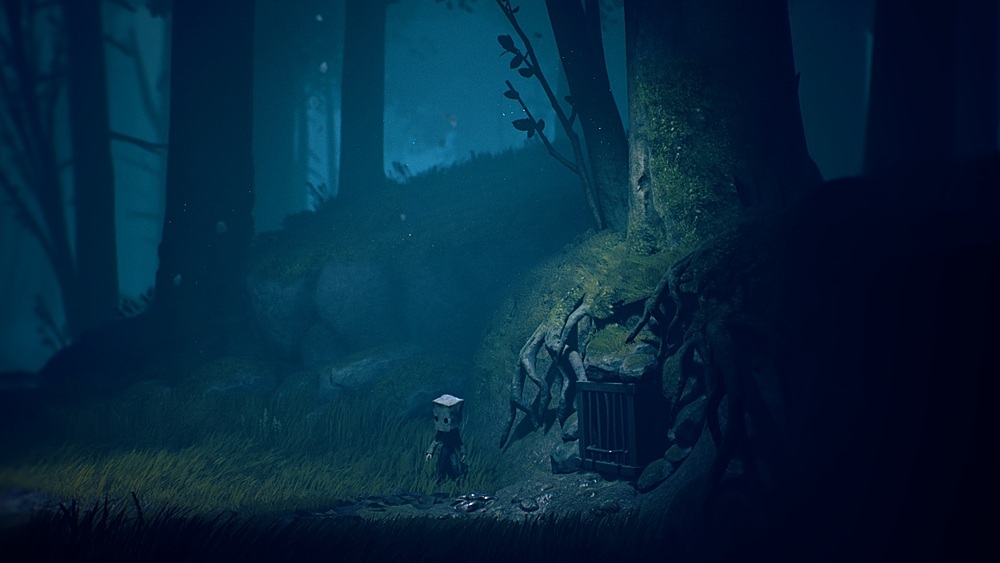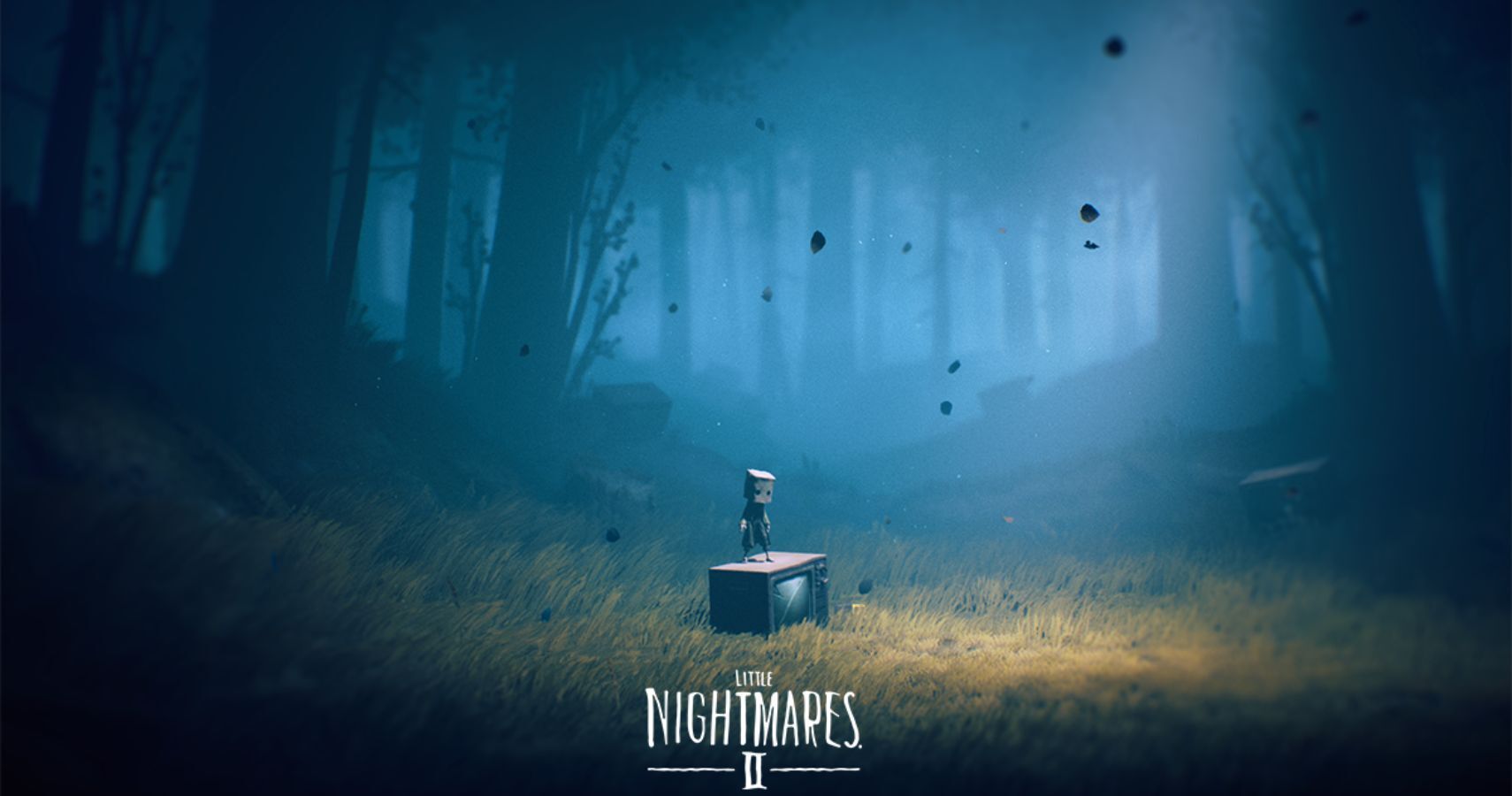If you're a fan of inventive horror games, then you owe it to yourself to check this game out. It's cruel, dark and so unsettling that even if you're a veteran of the genre you'll be taken aback by how effective Little Nightmares II is.
-
Graphics
-
Story
-
Atmosphere
-
Performance
-
Design
Remember that time you got lost in the shopping centre as a kid? You wanted to look at the toy section but your parents decided to walk on with their trolley. In that moment, that brief instance of confusion, the cosy world you knew was replaced with sheer terror.
You’re lost and alone, the aisle stretching around you, the shelves consuming your cone of vision. It dawns on you how small you are compared to the rest of the world and, as you start breaking into tears, you dad swings his head around the corner and swoops in to carry you away from your fear.
That’s what playing Little Nightmares II is like, the only difference being that an adult never actually comes to rescue you. No, every adult you encounter while playing as Mono, a little boy hiding his face from the world with a paper bag, is a horrific abomination. In fact, that goes for everything you’ll encounter in this strange, yet harrowing game. Everything, all the locations and terrible characters you encounter, is alien. Yet they’re all strangely familiar.
That’s the beauty of Little Nightmares II; while everything the game throws at you is sure to send a chill down you spine, you’ll be utterly engaged by every second. It’s not often a horror game comes along that maintains a powerful atmosphere that never outstays its welcome. For that, this game should be celebrated.
Little Nightmares II is scary, despite its simplicity
Much like The Medium, which we reviewed a few weeks back, Little Nightmares II isn’t a game you’re playing if you’re looking for a challenge. There are some light puzzles permeating the generally linear world but none are especially taxing. Yet there’s a smart simplicity to solving many of them, even if the game does sometimes over-rely on sections that require you to stand still and wait until it’s safe to move again.
Luring a twisted monstrosity away from the TV that’s currently mesmerising it into a puddle of electrocuted water isn’t difficult but is satisfying to figure out. You’ll feel smart for overcoming the game’s challenges, even if they’re not too complicated, a testament to how well this game has been designed.
It’s not a difficult platformer either, with most jumps and leaps being rather forgiving in their distance. Despite that, they all feel life-and-death. Every single time Mono jumps across anything, whether there’s something below him or not, you’re gripping the controller tighter than you should be.
What the game lacks in challenge it makes up for with sheer presentation; every section of the game is dripping with the kind of tense atmosphere that results in bitten nails strewn about the floor. The tension is quiet at first, hidden in the dark, but bursts forth to chase Mono and Six, his companion, through an escalating series of traps and split-second decision puzzles. It’s excellent and easily the best part of the game.
Speaking to Six, the protagonist of the original Little Nightmares, she returns as an AI character to help Mono along their journey. She’s completely controlled by AI, functioning separately from the player, and this is one of the few cases where a computer-controlled companion isn’t completely useless.
It’s helped by the fact that the puzzles that require her assistance aren’t complicated. You won’t be forced to wait around for her or find yourself yelling at the TV because she’s not doing what you need her to do. While the addition of a second character doesn’t change matters up tremendously from the first game, something that could be a criticism, it enhances play enough to make it feel fresh when she’s around.
It’s also just gorgeous
This is an attractive game. Which is a strange thing to say when one of the focal points of the game involves a maths teacher with a neck that stretches like a snake searching for prey. It’s not so much a beautiful game (although some of the more panoramic moments when the camera pulls back are spectacular) but the art style is so detailed that everything feels hostile.
Little Nightmares II makes the fears of a child more real than they have any right to be. It’s not just that everything looks wonderfully animated, it’s that it all works to communicate fear of the known, but twisted to such an extent that it becomes alien. Monstrous. This game does what every great horror story should do, taking that which is comfortable and distorting it so that we don’t even want to look at it.
Which goes for the game’s story as well which, admittedly, will either resonate with you or fall completely flat. Little Nightmares II is a narrative meant to be interpreted in any way that makes sense to the player. It is purposefully obtuse, leaving you to draw your own conclusions as to what it all means. You’ll either love that and enjoy piecing together your own theories or you’ll be lost. Which isn’t all bad. I think the point of Little Nightmares II isn’t telling this tightly-paced, well-structured story. It is in trying to provoke a response, making you feel something through the setting and atmosphere. In that regard, it’s a resounding success.
Little Nightmares II Verdict
If you’re a fan of inventive horror games, then you owe it to yourself to check this game out. It’s cruel, dark and so unsettling that even if you’re a veteran of the genre you’ll be taken aback by how effective Little Nightmares II is. It’s not remarkably challenging, nor is it overly long, but the world of the game, the visuals and atmosphere, are unlike any other horror game out there, bar the original in the series. If you have a spare weekend to kill and feel like some creepy chills, you can’t do much better than this.
Little Nightmares II was reviewed on Xbox Series S. Code was supplied by Prima Interactive.





